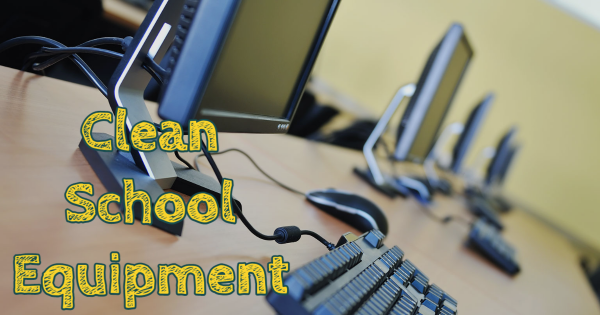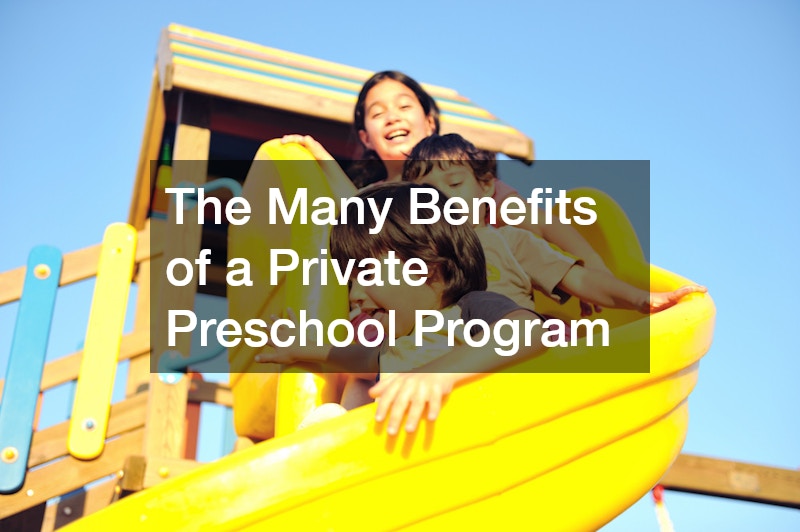The year 2020 has been perhaps one of the most challenging for school systems in the United States. Many have had to transition from typical in-person schooling to online classes in order to suppress the spread of the novel coronavirus. Those that don’t require teachers and staff to put themselves at risk of catching the virus, which has led many teachers to quit their jobs during an economic crisis. Additionally, both schools that have remained open, and those that are closed have faced constant criticism from both parents and government officials. But this is not necessarily unfamiliar to schools and teachers, which regularly face challenges due to the various issues inherent to the American education system. An estimated 56 million teachers are employed across world, teaching pre-K to high school. Many of them, especially in the U.S., are forced to not only teach their students but invest time, energy, emotion, and even their own money into their jobs due to a lack of funding given to public schools. It’s not uncommon for teachers to buy their own school supplies for their classrooms, on top of being paid a salary that has been deemed too low by many.
Therefore, it should not be surprising that some teachers have chosen to strike over the years, particularly in 2020 when many feel that their health is being undervalued. But the vast majority of teachers teach not solely because of a paycheck, but because they love teaching and wish to work with and help children. The same can be said for the majority of school administrators, many of which were once teachers, as well as the staff that work throughout schools. But while maintaining a school is challenging at any time, it is especially difficult right now. Teachers have been facing various difficulties in connecting with their students online and ensuring that they receive full and comprehensive educations. Additionally, as some students struggle to maintain their grades while learning from home, teachers and school staff, in general, may be concerned about their job security. This is why many parents and indeed those that do not have children in school are seeking ways to help. Those interested in learning how to donate to local schools, as well as what those schools need, should look no further. Schools and teachers have many different needs, and no donation of time, products, energy, or even money is too small or too great.
Volunteer Time to Schools

Although it is important that Americans take steps to socially distance themselves from others and wear masks in order to stop the spread of the coronavirus, it’s also valuable for them to safely donate their time to school systems. Those exploring how to donate to local schools may initially be daunted, worried that they have nothing to give because their funds are currently restricted. But volunteering for schools and teachers is greatly appreciated, and volunteers are almost always needed by school systems. Additionally, school systems that are shut down can still benefit from those that wish to volunteer remotely. There are many things to do remotely with students that can be hugely beneficial. School systems that are still open can benefit from safe and healthy volunteers offering to help with after-school programs. However, it is important for volunteers to ask about different restrictions currently in place due to the pandemic before making plans.
Remote volunteering can usually be done with a simple computer system and some time set aside for students. Many students have fallen behind academically as they struggle with understanding and learning remotely. While it’s impossible for these students to go to the classroom right now, having more time with a tutor can allow them to pick up the pace and strengthen their learning skills. Those exploring how to donate to local schools may want to volunteer as remote tutors, helping these students with remedial math, science, or English classes. Volunteers with backgrounds in childcare or education are especially appreciated as tutors. Oftentimes, students and schools can work with tutors’ schedules, ensuring that volunteering is a straightforward process.
Offer School Supplies to Teachers

As previously mentioned, many teachers pay for their own school supplies out of pocket. Therefore, it is hugely appreciated when people in the community offer to donate school supplies. When attempting to understand how best to donate to local schools, a donor may want to actually get in touch with teachers or administrators in order to understand what is most needed. Teachers that have younger students may require more art supplies or pens and pencils, while teachers with older students could benefit more from supplies related to science experiments, like basic lab equipment. The pandemic has required many schools to work off of an even more limited budget than they normally do and donated school supplies can enable them to ensure that no students are left without the supplies they need.
Additionally, technology is needed by many schools, especially now. There is no guarantee that students will be able to work from home as they must. Many families lack the income to give their children tablets or laptops, which is why schools send students home with this equipment. But as the pandemic has progressed, equipment sometimes fails or needs to be refreshed, and schools have limited supplies. Even those that cannot personally donate this type of equipment on a large scale can operate fundraising drives in order to help pay for additional school supplies. Those that are interested in how to donate to local schools but lack the financial resources themselves can organize community drives and spread awareness about what schools need. Additionally, these types of more complex school supplies require a great deal of upkeep. Individuals that can donate laptop repair services, or connect schools with technicians that can offer these services, are hugely helpful at this time.
Offer Food for Students

One of the main reasons why some communities have called for students to stay in school despite concerns about the spread of the coronavirus is that schools are often some of the only places in which students can receive regular meals. Free and reduced lunch programs at public schools ensure that children are fed lunch and quite often breakfast. Many school administrators and teachers have become concerned about children going without food because they are not in school. While some school systems have been able to deliver meals to students in need, many are not able to do so due to a lack of volunteers and a lack of funding. Those interested in exploring how to donate to local schools may want to reach out to their school systems in order to see whether or not they would be able to donate their time and energy to this cause.
Volunteers would not only be needed to deliver these meals to families in need in a safe and socially distanced way; in some cases, they may also be needed to help assemble and pack these meals. Although this can be time-consuming, it’s important for those interested in understanding how to donate to local schools to realize that ultimately, teachers and administrators are most worried about the students. This kind of specialty project can help ensure that students are able to get the food that they need and focus on school rather than where their next meal will come from. This is especially important in the midst of an economic crisis that has caused many Americans to lose their jobs.
Clean School Equipment — Or Pay For It

Right now, it is more important than ever before that schools and the pieces of equipment that students and teachers use are as clean as possible. Although the coronavirus is largely spread through breathing in droplets of moisture from infected individuals, the virus can also live on surfaces for extended periods of time. Those that are interested in learning how to donate to local schools while living in school districts that are open may want to consider volunteering to help clean equipment. Although schools employ janitors and use cleaning services, now equipment must be cleaned much more constantly. Not all schools will allow volunteers to help clean equipment, but this is something that individuals may want to ask about.
Additionally, cleaning services are other issues that can be quite costly for school systems. Therefore, teachers are left spending much more time than they normally would cleaning equipment. Teachers are usually not being given pay raises in conjunction with their increased job duties. Therefore, it may also be worth volunteers’ time for them to organize drives that can help pay for cleaning services as well as school equipment. In general, fundraising is extremely important for schools during this difficult time. Fundraising can not only pay for supplies, but help schools improve their buildings and ensure that they are able to return to their functionality as seamlessly as possible following the pandemic subsiding. Though it can be difficult for typical fundraisers like marathons to take place at this time, volunteers can still organize online fundraisers like auctions and Go Fund Me accounts in order to ensure that schools receive the money that they need.
Encourage Vaccinations
The COVID-19 vaccine has only recently been made available to those most in need, like frontline healthcare workers and those that are the highest risk of dying of the virus. But the reality is that this is not the only vaccine that students should be receiving. While school systems can require vaccinations of teachers and to an extent can require them of students, there has recently been a strong push against vaccines in the U.S. This is largely due to incorrect or misunderstood data being spread by people online, but it has led many parents to refuse to vaccinate their children. This fear is not only spreading to apprehensions regarding the COVID-19 vaccine; it’s also led many people to avoid having their children receive basic vaccines that will keep them safe in school.
This is a clear issue for open school districts in particular. Parents with children that have compromised immune systems that cannot receive vaccines have many reasons to worry about sending them to school at this time. Those that are looking up how to donate to local schools should also be taking the very basic steps of having themselves and their children vaccinated. While flu shots will not prevent children from catching COVID-19, they will keep them healthier and better able to fight off the coronavirus if they do catch it. These additional vaccines should be taken on top of the basic vaccines required by most school systems. Parents should also educate their friends and family about the importance of vaccines, as well as the importance of keeping their children home if they show any symptoms of illness. COVID-19 presents with a wide variety of symptoms, and now is not the time for parents to risk sending their children to school while sick.
When exploring how to donate to local schools, it’s easy for parents to become intimidated and worry about how they can help without money or a great deal of excess time. But every school system is different, and most people can benefit them in some ways if they are creative. Parents should call up their school administrators and ask about what they need. Even donating used office seating furniture to school can be greatly helpful in some cases. Schools are so underfunded that every bit of help is significant.
Additionally, parents should focus on keeping their children happy, healthy, and devoted to their studies. They can’t attend gym class in between their academic classes in order to release their energy, so parents should have them play outside. Conversations should be had about the importance of listening to teachers and focusing on studies.
Now is the time for parents to not only explore how to donate to local schools but to keep their kids and their community as healthy and school-focused as possible. Symptoms of a cough and cold must be taken seriously, and parents should do what they can to support their teachers.




